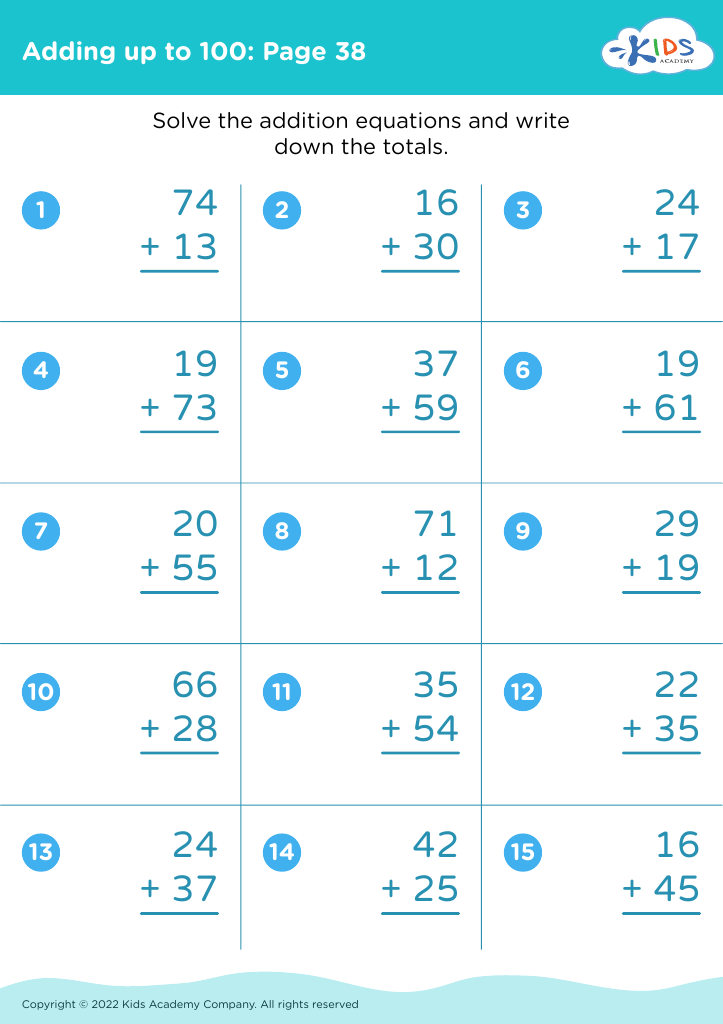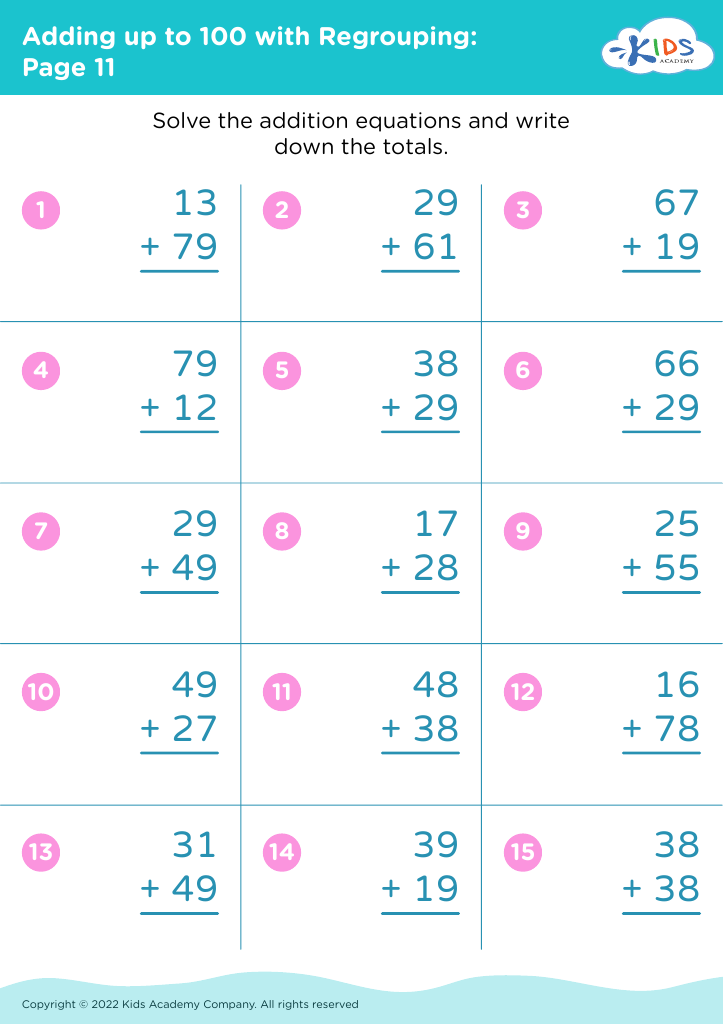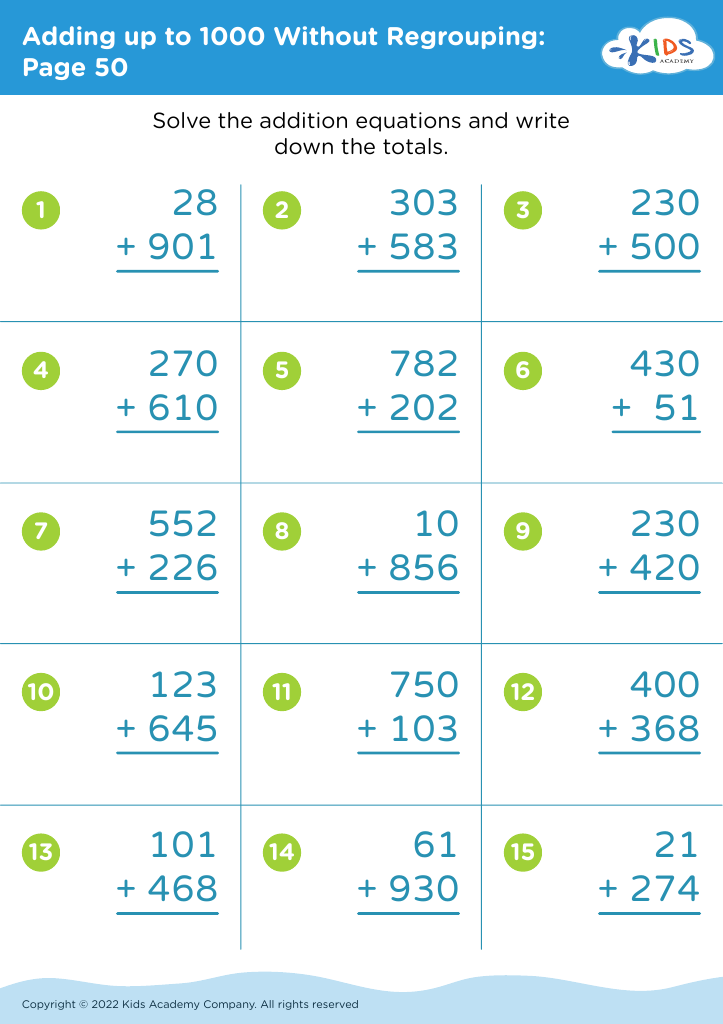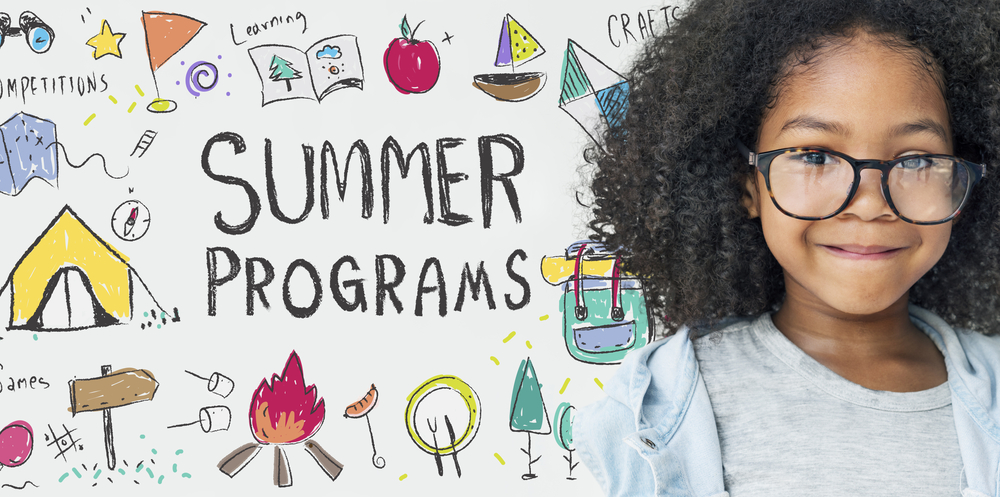Fine Motor Skills Addition & Subtraction Worksheets for Ages 7-8
40 filtered results
-
From - To
Enhance your child's learning experience with our Fine Motor Skills Addition & Subtraction Worksheets for Ages 7-8. Designed to support cognitive development while honing fine motor skills, these engaging worksheets blend math practice with creative activities. Each worksheet features fun, interactive exercises that encourage children to practice addition and subtraction through tracing, coloring, and cutting. Ideal for young learners, our resources not only strengthen mathematical understanding but also improve dexterity and hand-eye coordination. Use our ready-to-print worksheets to make learning enjoyable and effective, fostering a love for math as your child gains confidence in their skills!


Valentines Day 2 Printable


Counting Spider Eyes Worksheet


Counting Seedlings Worksheet
Fine motor skills play a crucial role in a child's overall development, particularly in the context of math. For children ages 7-8, mastering addition and subtraction requires not only cognitive understanding of these concepts but also the physical coordination to manipulate tools and materials effectively. Fine motor skills enhance the ability to write numbers, use manipulatives, and engage in hands-on activities that reinforce mathematical thinking.
When parents and teachers focus on fine motor skill development, they support students in gaining confidence and proficiency in math. Activities such as using counters, handling scissors, or drawing number lines require precision and dexterity, reinforcing the connection between physical actions and mathematical outcomes. Furthermore, an increase in fine motor skills can lead to improved focus and sustained attention during math lessons, contributing to overall academic success.
Moreover, fostering these skills aids in everyday tasks beyond the math curriculum, such as writing, art, and daily self-care activities. Thus, parents and teachers should prioritize fine motor skill development as an integral part of teaching addition and subtraction, ensuring students not only excel in mathematics but also develop holistic life skills.


 Assign to My Students
Assign to My Students



































